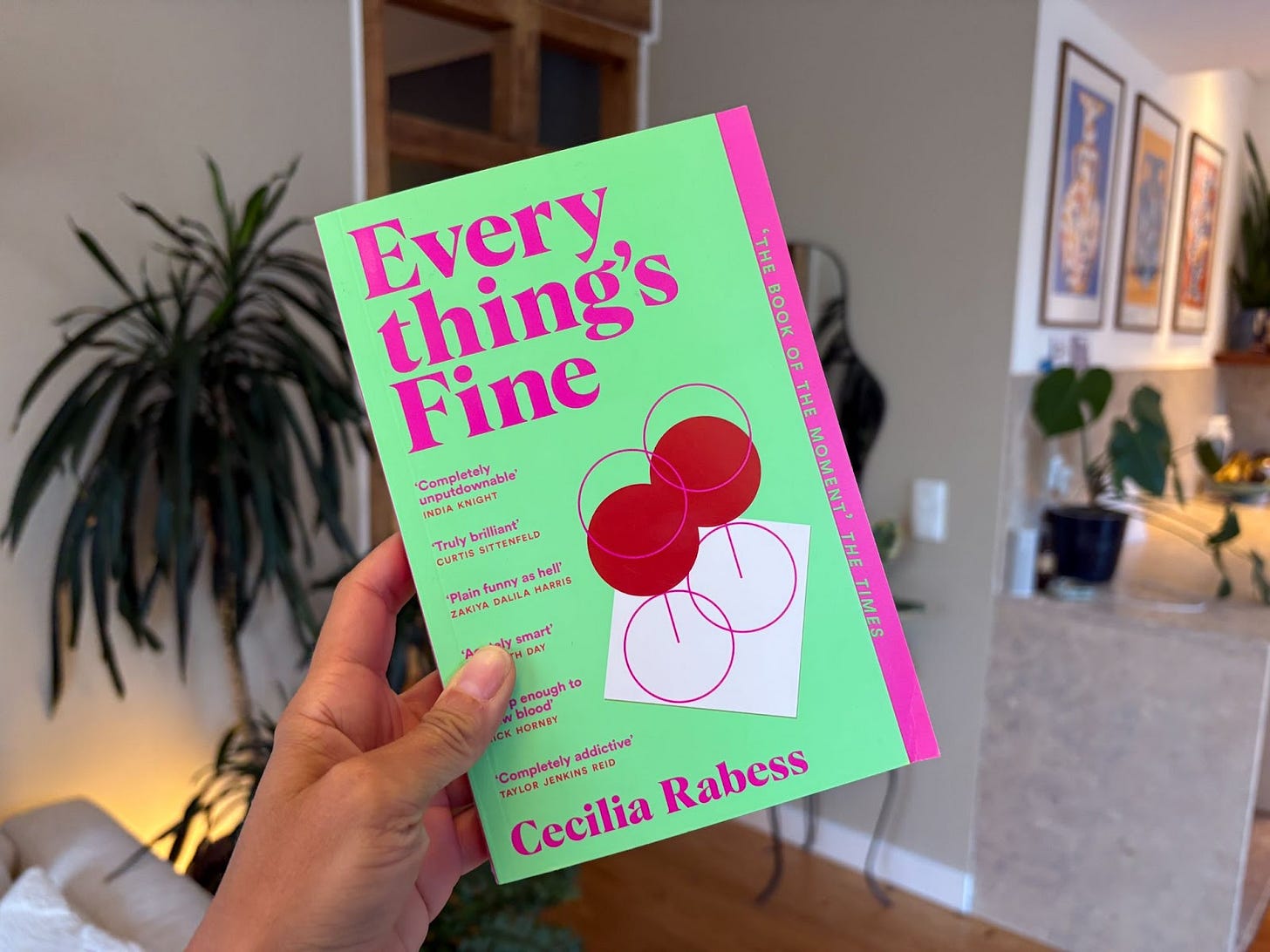#135: 🧠 The Headphones That Read Your Mind (And Tell You When to Take a Break)
Your Brain Has a Fitbit Now
Hey friends,
I’m back in Lisbon after 3 weeks reconnecting with friends and colleagues in Berlin.
I finished my trip by attending the Life Summit Berlin which I was at last week on Tuesday Wednesday.
There are many Longevity events coming up this summer in Europe.
Longevity Week in London is next week.
And another super strong lineup of speakers will be at Longevity Summit Dublin.
I have a discount code for Longevity Summit Dublin.
Use this link to register for discounted tickets back to the Early Bird Pricing.
💬 In this note:
🧠 The Headphones That Read Your Mind (And Tell You When to Take a Break
📚 Everything’s Fine
⚡️ Gen Zers Are Choosing Blue Collar Jobs
🧠 The Headphones That Read Your Mind (And Tell You When to Take a Break)
At the Life Summit Berlin, I had the chance to try out several of the latest technologies for longevity clinics and at home (if you have a big budget). Vendors were there offering hydrafacials to dry-cold plunge tanks, IV NAD+ and full laydown red light therapy.
What most impressed me was a consumer product from brain-computer interface company, Neurable.
While Neurable didn’t have a booth at the Summit, I was fortunately able to connect with the founder, Dr. Ramses Alcaide, directly and arrange a demo.
The team has spent a decade developing "Neurable AI,” a proprietary brain signal processing technology that can get lab-quality EEG readings from just 12 sensors.
Most traditional EEG systems need 20+ sensors and look like something from a sci-fi movie, with wires and sensors sticking out of a neoprene head cap. Like the image below.
In collaboration with Master & Dynamic, Neurable built the MW75 headphones to deliver EEG readings on par with established industry-standard hardware inside premium wireless headphones.
The sensors in the headphones can read the EEG of your brain in real-time and Neurable translates the readings to track focus, prevent burnout, and optimize productivity.
For the demo Ramses had me put on the MW75 headphones, and then read an article peppered with ads throughout the text.
After about 30 seconds of reading, he told me to stop and showed me the real-time readings of my brain’s focus.
What we saw was a steep diagonal line up and to the right, then when I hit an ad, the line would fall off of a cliff.
This was really cool to see represented as a graph, as it really shows that my brain doesn’t look at the ad or skips over it entirely.
I imagine advertisers may want to use this to really be able to A/B test and quantitate which ads not only make you stop scrolling, but which ones really engage your brain too.
Next Ramses showed me the latest product they are working on for consumers.
Over 2 minutes, Ramses told me to look straight ahead, still wearing the headphones, and not really think about anything while he took another reading.
After the quick brain scan, Ramses showed me my brain performance and the several parameters they measure.
Calmness
Wakefulness
Focused Attention
Physical Stress
Cognitive Speed
Anxiety resilience
Your Brain's Daily Health Check
Then Ramses showed me something that really impressed me, a new product in beta testing that calculates your brain age.
After a quick scan, my brain age appeared on the screen. To my relief, it matched my chronological age bracket, with scores above average compared to others in my age group. But what came next was even cooler.
Ramses pulled up another product in development where they're collecting EEG scans from neurodivergent brains. When I asked if we could compare my scan to their ADHD data, his eyes lit up.
"We only have a small sample of 12 ADHD brain scans so far," he explained, "but let's see what happens."
The overlay showed some parameters of my brain scan aligned perfectly with the ADHD patterns, while others diverged completely. It was like seeing a neural fingerprint that defied simple categorization.
The potential here is staggering. Imagine knowing on any given day how severe your ADHD symptoms might be, with personalized suggestions for maintaining focus or restructuring your workday accordingly. That’s actionable intelligence about your own mind.
The Fitbit for Your Brain
The applications for brain age monitoring extend far beyond productivity hacks. As we age, we're all fighting the same battle: maintaining sharpness, preserving wit, and preventing neurodegenerative disease.
If brain scanning becomes embedded in our daily devices, like using the MW75 Headphones, we create a Fitbit for your brain.
I've been wearing a Fitbit since 2016. Nearly a decade of step counts and heart rate data now tells the story of my movement patterns, exercise habits, and cardiovascular health over time.
Now imagine adding brain data to that picture. We'd have a comprehensive neural baseline spanning years or even decades. When cognitive changes begin, whether from depression, early Alzheimer's, or dementia, the data would catch subtle shifts that might otherwise go unnoticed until it's too late.
Early detection means early intervention. And early intervention can change everything.
Beyond Consumer Applications
While Neurable prepares to launch this consumer brain health product alongside their B2B offerings in the next year, they're already proving the technology's versatility in high-stakes environments.
Their sensors have been integrated into pilot helmets, ensuring aviators are well-rested and focused before taking flight. When lives depend on split-second decisions, having real-time cognitive monitoring isn't luxury, it's a necessity.
By the way, they're currently fundraising. Want an intro to the founder? Drop me an email or DM.
📚 Book of the Week
Everything’s Fine by Cecilia Rabess
Rating: ★★★☆☆
Jess, an accomplished black young woman, is hired into a hedge fund as the only person of color at the firm and works alongside Josh, an white, male, upperclass archrival from college.
Jess is convinced that Josh hates her and is out to set her up for failure. Little does she know that day by day, and with every quirky thing she does, Josh is falling for her.
Set in New York City, this story explores instances of sexism, racism, politics, misogyny, social/economic identity, and the complexities of a mixed-race, mixed-politics relationship.
I enjoyed this book, the relatable complexities of Jess and Josh’s relationship.
⚡️ Check This Out

Gen Zers are ditching careers in finance, tech and consulting in favor of blue-collar or skilled trade work, like welding, farming and construction.
With the constant doom of “AI will replace our jobs” hanging over our heads, Gen Z is ahead of the ‘white-collage apocalypse’ by skipping out on it entirely.
Currently, 42% of Gen Zers are either already working in or pursuing blue-collar roles. (This includes 37% of those with college degrees.)
Several factors are contributing to the shift, including the unstable job market and high education costs, but one of the biggest motivators is AI displacement.
In 2024, 62% of college seniors familiar with AI tools said they were worried about the tech’s potential impact on their career prospects, up from 44% in 2023, per a survey by early-career site Handshake.
A quarter of Gen Zers say trade jobs and blue-collar work are less likely to be replaced by AI.
Entering into farming, landscape, carpentry and plumbing is, for some, about doing meaningful work.
One recent Vassar College grad who now works at a butcher shop, put it: “If there’s no food, there’s no economy. If there’s no Microsoft Teams, there’s still an economy.”
Meanwhile, Anthropic CEO Dario Amodei recently called out governments for “sugar-coating” upcoming AI-driven societal shifts and not better preparing for workforces being eliminated en masse.
So, looks like Gen Z is much better prepared than the rest of us.
🗣️ Looking for the Nina’s Notes Podcast?
It’s available on: 🟢 Spotify, 🟣 Apple Podcasts, 🟠 Substack Podcasts
On the Nina’s Notes Podcast I interview entrepreneurs who are building products based on the science that I write about in the Nina’s Notes Newsletter.
You’ll also find voice overs of all the weekly Nina’s Notes.
Edited by Wright Time Publishing








Hi Nina, I just attended the first day of Unicorn summit today. Amazing vibes.
Looking through Day 2 Schedule, I couldnt believe that I saw your name up there. As a panelist speaker.
Well done to you, I cannot wait to attend your talk tomorrow.
Best of luck!